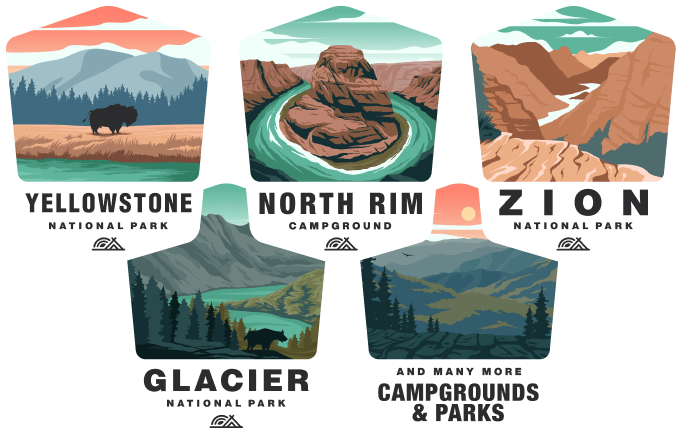Camping at Rocky Mountain National Park
Basic Information
Rocky Mountain National Park is a stunning jewel of the United States' park system, offering visitors a chance to connect with nature at high altitude. It's located in northern Colorado and spans the Continental Divide. When planning a camping trip to Rocky Mountain National Park, there are several key points to consider.
Camping Options
There are five campgrounds within the park:
- Aspenglen Campground
- Glacier Basin Campground
- Moraine Park Campground
- Timber Creek Campground
- Longs Peak Campground (for tent camping only)
Reservations for Aspenglen, Glacier Basin, and Moraine Park can be made in advance and are recommended, especially in the summer months when the park is most crowded. Timber Creek and Longs Peak operate on a first-come, first-served basis.
Backcountry Camping
If you're looking for a more secluded and primitive experience, backcountry camping is available, but it requires a permit that must be obtained in advance. These permits are issued on a first-come, first-served basis and can be acquired from the park's backcountry offices.
Amenities
Amenities vary by campground, but most drive-in campgrounds offer potable water, flush toilets, and a dump station. There are no showers or electric hookups in the park. Some campgrounds do have food storage lockers, campfire rings, and picnic tables.
Seasons and Accessibility
The camping season in Rocky Mountain National Park generally runs from late May through early October, though some campgrounds might open earlier or close later depending on the weather. It's important to note that due to the park's high elevation, nights can be very cold, even in summer.
Wildlife and Safety
The park is a habitat for an array of wildlife, including elk, mule deer, moose, and black bears. As such, proper food storage is critical to avoid attracting animals to your campsite. All campers should familiarize themselves with bear safety tips and other wildlife guidelines provided by the NPS.
Campfire Regulations
Campfires may be allowed in designated fire grates in some campgrounds, but this is subject to change based on fire danger conditions. Always check the current regulations when you arrive, and never leave a fire unattended.
Leave No Trace
As with any natural area, following Leave No Trace principles is key to preserving the park's beauty and resources. This means packing out all your trash, staying on designated trails to avoid damaging sensitive ecosystems, and disturbing wildlife as little as possible.
Reservations and Permits
For most campgrounds, you can make reservations up to six months in advance through Recreation.gov. Backcountry camping permits can be obtained by contacting the park directly.
Fees and Passes
There is an entrance fee for the park, in addition to the campground fees. Various passes are available, including an annual pass specifically for Rocky Mountain National Park or the America the Beautiful Pass that covers all national parks.
Accessibility
Some campsites and facilities have been modified to accommodate visitors with disabilities. When making a reservation, look for sites that are noted as accessible.
Activities
Apart from camping, the park offers a plethora of activities, including hiking, wildlife viewing, fishing, and scenic drives. Be sure to check with visitor centers for maps, guides, and advice on how to make the most of your visit.
Weather and Gear
Weather in the Rocky Mountains can be unpredictable. Prepare for all conditions by bringing layered clothing, rain gear, and high-quality sleeping bags. Additionally, as altitude sickness can be a risk, take measures to acclimatize and stay hydrated.
Planning ahead and being prepared will ensure that your camping experience in Rocky Mountain National Park is enjoyable and safe. Always check the National Park Service's official website for the most current information before you visit.

